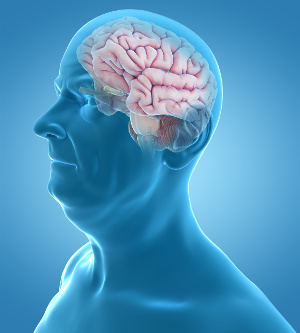Selenium counteracts Alzheimer’s disease
- by way of different mechanisms
 There seems to be a relation between ageing, Alzheimer’s disease, and the widespread problems with selenium deficiency. According to a new study that is published in Antioxidants, scientist have revealed how different selenium-containing proteins can affect pathological processes in the brain that are known to cause Alzheimer’s disease. They believe selenium may have therapeutical potential in the treatment of this disease, which is one of the greatest disease burdens and a leading cause of death among seniors. Selenium also helps in the prevention of the disease, which is extremely important because it is often difficult to diagnose Alzheimer’s disease in its early stages.
There seems to be a relation between ageing, Alzheimer’s disease, and the widespread problems with selenium deficiency. According to a new study that is published in Antioxidants, scientist have revealed how different selenium-containing proteins can affect pathological processes in the brain that are known to cause Alzheimer’s disease. They believe selenium may have therapeutical potential in the treatment of this disease, which is one of the greatest disease burdens and a leading cause of death among seniors. Selenium also helps in the prevention of the disease, which is extremely important because it is often difficult to diagnose Alzheimer’s disease in its early stages.
Selenium supports more than 25 different selenium-containing enzymes (selenoproteins), some of which are antioxidants that protect cells and tissues in the brain against oxidative damage. The exact mechanisms through which the different selenoproteins can attenuate the pathological processes in connection with Alzheimer’s disease have not been mapped out until now. However, in this new study, scientists looked at how selenium supplementation affects mice that have contracted Alzheimer’s via transgenic methods.
The mice were supplemented with methylselenocysteine (SMC), selenomethionine (SeM), or sodium selenate (Na2SeO4) for a brief period. At the same time, the scientists studied different pathological processes related to Alzheimer’s disease as well as the activity of various selenoproteins and the metabolic profiles in the brain. They observed that all three selenium sources worked by:
- increasing levels of selenium in the blood
- increasing the antioxidant capacity
- regulating the amino acid metabolism
- improving damaged synapses that share information between neurons
- improving cognitive functions such as learning and memory
The scientists also observed that all three selenium compounds had the following individual effects:
Methylselenocysteine (SMC):
- Increased activity of thioredoxin reductase, a selenoprotein that is important for cellular energy metabolism and also serves as an antioxidant
- Reduced formation of pathological tau proteins that are known to accumulate in Alzheimer’s disease and cause loss of brain cells
Selenomethionine (SeM):
- Largest increase in levels of the selenium-containing antioxidant GPX 1 (glutathione peroxidase 1)
- Reduced formation of the pathological beta-amyloid proteins that are known to cause inflammation in the brain tissue in connection with Alzheimer’s disease
- Improved function of the mitochondria, the energy-producing powerhouses of cells
Sodium selenate (Na2SeO4)
- Improved function of MsrB1 (methionine sulfoxide reductase B1), a selenoprotein that regulates the immune defense and protects the amino acid methionine against oxidative stress. Methionine is important for the bones, muscles, liver, enzymes, etc.
- Improved damaged synapses and their activity
The researchers have demonstrated how different selenium compounds in each their own ways affect pathological processes associated with Alzheimer’s disease. This may provide useful insight into how to use selenium to treat the disease. Their new study supports earlier research that shows the importance of getting plenty of selenium if you want to preserve or even improve your cognitive functions throughout life.
Why is it so important for older people to get enough selenium?
The different selenoproteins are all involved in complicated metabolic processes and contribute to cellular energy turnover, the production of thyroid hormones, and formation of new neurons. In addition, selenium supports different antioxidants that protects cells and tissues against oxidative stress, which is an imbalance where harmful free radicals outnumber the protective antioxidants and attack cells and tissues by triggering harmful chain reactions. Free radicals are a normal byproduct of the body’s energy metabolism and other metabolic processes, but the free radical burden increases with age because our cells’ ability to produce energy and utilize oxygen decreases. External factors such as smoking, using different types of medicine, and poisoning can also increase the free radical load, and the same is the case with chronic diseases and chronic inflammation, which is also known as chronic low-grade inflammation and typically occurs in old age. Therefore, there are many different factors that make elderly people increasingly vulnerable to oxidative stress, which means they need more antioxidants, particularly selenium. The current recommendation for daily selenium intake lies in the range of 50-70 micrograms per day, but studies suggest that we need 100-200 micrograms in order to properly saturate selenoprotein P, which is often used as a marker of the body’s selenium status.
In the current study, the three tested selenium sources had a positive effect of brain health. One can also choose to take selenium yeast with a high and documented content of methylselenocysteine, selenomethionione, and around 20 other organic selenium species.
Read more: Selenium supplements have a positive effect on brain health and Alzheimer’s disease
References:
Zhong-Hao Zhang et al. Different Effects and Mechanism of Selenium Compounds in Improving Pathology in Alzheimer´s Disease. Antioxidants 2023
Meire Ellen Pereira et al. Effects of Selenium Supplementation in Patients with Mild Cognitive Impairment or Alzheimer’s Disease: A Systematic Review and Meta-Analysis. Nutrients 2022
Odette Leiter et al. Selenium mediates exercise-induced adult neurogenesis and reverses learning deficits induced by hippocampal injury and aging. Cell Metabolism. February 3, 2022
Search for more information...
- Created on .








